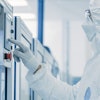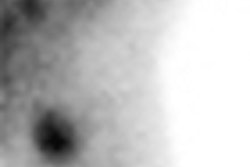Breast-specific gamma imaging (BSGI) or positron emission mammography (PEM) exams may increase a woman's risk of developing radiation-induced cancer, according to a special report published online August 24 and appearing in the October issue of Radiology.
Study author R. Edward Hendrick, PhD, clinical professor of radiology at the University of Colorado Denver School of Medicine in Aurora, CO, concluded that BSGI or PEM carries a lifetime risk of inducing fatal cancer greater than or comparable to a lifetime of annual screening mammography starting at age 40.
Hendrick reviewed recent studies on radiation dose from radiologic procedures and organ doses from nuclear medicine procedures, along with Biologic Effects of Ionizing Radiation (BEIR) VII age-dependent risk data, to estimate the lifetime risk of radiation-induced cancer incidence and death from breast imaging exams using ionizing radiation.
Receiving a single two-view digital mammography or film-screen mammography exam was associated with an average lifetime risk of fatal breast cancer of 1.3 and 1.7 cases, respectively, per 100,000 women age 40 years at exposure, and less than one case per 1 million among women age 80 years at exposure.
Annual screening by digital or film-screen mammography performed in women from age 40 to age 80 is associated with an aggregate lifetime risk of fatal breast cancer of 20 to 25 cases in 100,000.
In comparison, a single BSGI exam was estimated to involve a lifetime risk of fatal cancer 20 to 30 times that of digital mammography in women 40 years of age, while the lifetime risk of a single PEM study was 23 times greater than that of digital mammography.
In addition, while mammography only slightly increases a woman's risk for breast cancer, the study found that BSGI and PEM may increase the risk of cancers in other organs as well, including the intestines, kidneys, bladder, gallbladder, uterus, ovaries, and colon.
Hendrick recommended that women younger than 40 who are known to be at higher risk of breast cancer should consider being screened with breast ultrasound or breast MRI, both of which deliver no ionizing radiation and have sensitivities to breast cancer that are unaffected by higher breast density.
By Wayne Forrest
AuntMinnie.com staff writer
August 24, 2010
Related Reading
Radiation dose must be reduced for molecular breast imaging, June 9, 2010
Screening mammography sensitivity is improving, study shows, May 27, 2010
Mammograms catch few cancers in young women: study, May 4, 2010
Breast cancer risk assessment starts with the right questions, March 23, 2010
BSGI proves best at detecting invasive lobular cancer, February 11, 2009
Copyright © 2010 AuntMinnie.com




















